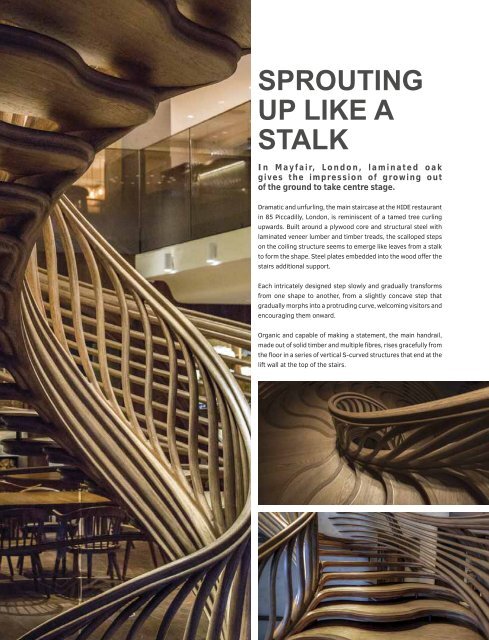Wood In Architecture Issue 2, 2018
First published in 2017, Wood in Architecture (WIA) is a bi-annual trade magazine devoted to the international timber construction sector. The newest addition to the Panels & Furniture Group of wood magazines, WIA features in-depth insights to the latest industry news, incredible projects and leading trade events. WIA is an advocate for timber as a material of choice for today’s built environment, and is the perfect source of inspiration for architects, builders, engineers and interior designers across the globe.
First published in 2017, Wood in Architecture (WIA) is a bi-annual trade magazine devoted to the international timber construction sector. The newest addition to the Panels & Furniture Group of wood magazines, WIA features in-depth insights to the latest industry news, incredible projects and leading trade events. WIA is an advocate for timber as a material of choice for today’s built environment, and is the perfect source of inspiration for architects, builders, engineers and interior designers across the globe.
You also want an ePaper? Increase the reach of your titles
YUMPU automatically turns print PDFs into web optimized ePapers that Google loves.
BIG PICTURE<br />
SPROUTING<br />
UP LIKE A<br />
STALK<br />
<strong>In</strong> Mayfair, London, laminated oak<br />
gives the impression of growing out<br />
of the ground to take centre stage.<br />
Dramatic and unfurling, the main staircase at the HIDE restaurant<br />
in 85 Piccadilly, London, is reminiscent of a tamed tree curling<br />
upwards. Built around a plywood core and structural steel with<br />
laminated veneer lumber and timber treads, the scalloped steps<br />
on the coiling structure seems to emerge like leaves from a stalk<br />
to form the shape. Steel plates embedded into the wood offer the<br />
stairs additional support.<br />
Each intricately designed step slowly and gradually transforms<br />
from one shape to another, from a slightly concave step that<br />
gradually morphs into a protruding curve, welcoming visitors and<br />
encouraging them onward.<br />
Organic and capable of making a statement, the main handrail,<br />
made out of solid timber and multiple fibres, rises gracefully from<br />
the floor in a series of vertical S-curved structures that end at the<br />
lift wall at the top of the stairs.<br />
18 ISSUE 2 • <strong>2018</strong> • WOOD IN ARCHITECTURE


















